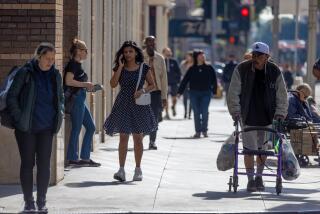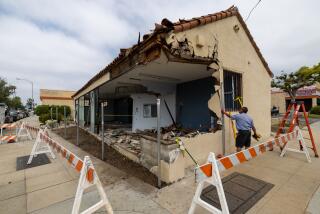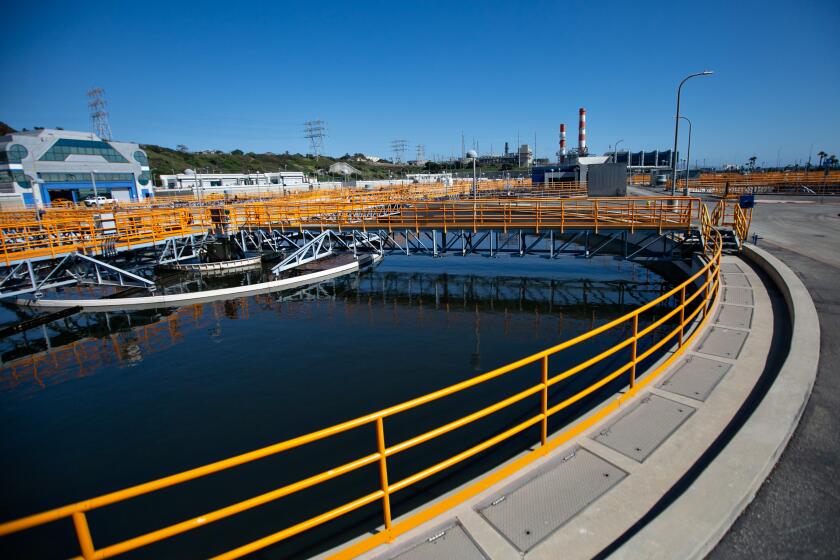The Sport Is Taking Off Again : Skateboarding’s Resurgence Is Visible in Parks, on TV--and at Cash Registers
Skateboarding, considered just as hip as surfing in some circles and born long before in-line skating, is enjoying another boom in Surf City and beyond.
The signs, like the sound of a smooth ride on blacktop, are unmistakable: Two public skateboard parks have been built here and are packed with kids daily. Advertisers and a multitude of businesses are beginning to embrace the sport in an effort to attract the younger market. Two professional skateboarders have endorsed tennis shoes specifically designed with the board in mind.
And a skateboard contest held before 1,000 spectators in Santa Ana two months ago attracted 50 contestants from as far away as Australia and Europe. If that’s not enough evidence, just tune in ESPN in January and watch “Athletes in Motion,” which will feature the contest that was organized by Costa Mesa resident Chris May, a 29-year-old skateboard fanatic who lives and breathes the sport. May is trying to get more skateboard parks built in Orange County.
“It’s been a while since skateboarding has been on television,” May said. “But skateboarding is just like anything, it goes in and out of the favor of the public eye. But it’s making a resurgence, it’s making a comeback, and you can see it.”
Paul Schmitt, a skateboard manufacturer in Costa Mesa, agrees. Sales are strong now, but Schmitt predicts they’re going to get even stronger in the next five years, when he believes the popularity of the sport will hit a peak last seen in the 1970s.
“The popularity goes in population cycles,” said the 31-year-old Schmitt. “Kids who do the most skating these days generally fall in the 10-to-15 age group, but right now there are a lot of kids between the ages of 5 and 10. They’ll grow into it. Some will skate for a week, some will skate for a month, some for a year and some for the rest of their lives.”
Still, the sport must overcome numerous obstacles. Born in Southern California beach towns, it has carried a rebel image that participants say is a bad rap. Many cities, for example, have passed ordinances banning skateboarding on streets and sidewalks, forcing skaters to either break the law or search out-of-the-way places.
“From my experiences, most skateboarders were people who I don’t want in the area I live,” said Lloyd Helm, 53, of Huntington Beach, who successfully opposed the building of a skateboard park across the street from his home.
“There’s a lot of real sleazy guys hanging around. They have little respect for other people’s property. There’s a little doughnut shop where I live and there’s a ‘No Skateboarding’ sign, but they still do it. They destroy the planters and the tiles there.”
Lawsuits and liability fears have spelled doom for many skateboard parks that once existed across the state. May likens the now-vacant rinks to “extinct dinosaurs.”
“We need more progressive cities like Huntington Beach,” he said.
Randy Huttenberger, the project manager for Huntington Beach’s Public Works Department, said the two new skateboard parks have been a smashing success. One was just completed across from City Hall, at the intersection of Main Street and Yorktown Avenue, and the other is in Murdy Park.
“You can’t get too many more kids in there without a shoehorn,” Huttenberger said. “But it’s good. It keeps them off the streets and gives them something to do. Hopefully, they’ll stay there if the rinks can take a beating.”
In fact, the parks are so popular that the city is thinking of building a third, if that’s what it takes to keep skateboarders off Main Street and the pier, where pedestrians have complained about them.
May is hoping to open a skateboard park in Irvine and possibly set up a ramp--a U-shaped track that enthusiasts use to practice trick maneuvers--in Costa Mesa. He said he has talked to the Boy Scouts about the latter idea and they have expressed an interest in helping out.
“Skateboarding is not going to stop,” he said. “It’s here to stay now.”
More to Read
Start your day right
Sign up for Essential California for news, features and recommendations from the L.A. Times and beyond in your inbox six days a week.
You may occasionally receive promotional content from the Los Angeles Times.






